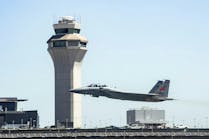Legacy Defense Programs Threatened as US DoD Tightens Belt in Face of Reduced Federal Stimulus, says GlobalData
Following yesterday’s comments by Mark Esper, the US Defense Secretary, regarding potential funding cuts to legacy programs such as the C-130H cargo planes rather than reducing funding for modernization and development programs;
Madeline Wild, Aerospace and Defense Analyst at GlobalData, a leading data and analytics company, offers her view on the situation:
“The US Department of Defense (DoD) and the wider defense market are considered to be far more buffered from the negative economic effects of COVID-19 than others. This has been highlighted by the positive Q1 results exhibited by Lockheed Martin (+9.2% sales y-o-y) and Northrop Grumman (+5% sales y-o-y) recently. The substantial size of the defense budget - US$738bn in FY2020 - further protects it from the coronavirus pandemic by giving the DoD financial leverage in terms of where cuts can be made.
“Potential funding cuts to legacy programs follows Rep. Adam Smith’s hints that the DoD will see a substantial reduction in federal aid following the US$10.5bn it received in the CARES Act in March.
“The platforms subject to cuts, and subsequent divestment or retirement, could include 44 A-10 Warthog planes, 24 C-130H cargo planes, 21 RQ-4 Global Hawk surveillance drones and 17 B-1B Lancer bombers. These platforms were initially highlighted in the Air Force’s 2021 budget request. It is understandable that the DoD is keen to maintain high levels of investment into modernization and development projects in a period of uncertainty, as Russia and China have been using the crisis to flex their military muscles. China has been conducting an increased number of training exercises in the South China Sea, and Russia’s naval fleet has been particularly active in Northern Europe. This makes any future decision by the DoD to prioritize modernization and development a strategically valuable course of action.”


